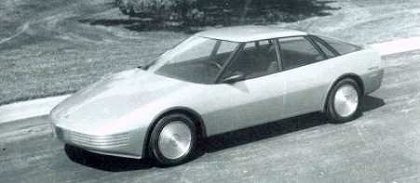Note from Darin (admin): this installment is part of a series posted by Phil (aerohead) about the effectiveness of various aero mods - with quotations and citations to source data.
See the aero mods data index here.
End note.
---
This is a big one and I'm gonna break it into two parts,quotes and data.
Also,a word on terminology.Some car-makers use the term "greenhouse" to describe the entire upper portion of cars,including the windshield."Backlight" is used synonymously with rear windshield. Modern car "roofs" are integrated into the body,so when you're decribing a body,you may also be describing the roof,especially in plan-view as with the EV-1,Honda Insight,etc..
So here's some comments made over the centuries which apply to ecomodding
"The air...........should not be torn,crushed,or broken by plane surfaces,but should be curved and softly deflected from its direction by means of suitably curved surfaces......................Contrary to expectations,no disadvantage accrue(s) even from placing the thickening right at the leading edge,..............it even appear(s) as though this shape possesse(s) specially favourable properties as regards air pressure,..........and very little retarding pressure,.........but only when the thickening was in front and not at the trailing edge."
Otto and Gustav Lillianthal,1870s.
"Dr.Wunibald Kamm......maintains that the roof slope should never exceed 10-degrees."
HOT ROD Magazine,April,1962.
"Form drag is a function of basic body shape created by the designer and influenced by the body engineer.Body shapes that minimize positive aerodynamic forces or pressure on the front of a vehicle and minimize negative aerodynamic forces or suction on the rear of the vehicle will exhibit low form drag.The tear drop or "streamline" shape suggested by this obviously does not fulfill the many requirements of passenger accommodation and salable appearance."
Kelley & Holcombe,General Motors,1963.
"The ....fast back tops....contour must curve gently,even if it ends abruptly at the rear,if wind resistance is to be kept low.....The top should curve down tangent to the windshield surface....If airflow separation occurs at any point,it will spread for some distance rearward before returning to contour.If the contour curves away too rapidly,airflow will continue separated and never return,thus causing high drag.....important to.....streamlined automobile(s)....keeping the length reasonable for parking (is)(b)ob-tailing(which)affects (induced drag) if the "bobbing" occurs shortly after the start of the downward curve of the upper surface or top. Since the cut-off increases ....pressure drag slightly,and reduces the induced drag (lift), an optimum cut-off point can be determined for an automobile at which the two effects cancel each other.(T)his blunt....aft portion will have no more drag than a full length streamlined body that curves down to the belly pan."
Walter Korff,Lockheed Aircraft Corporation,1963.
"If....convexity (of the roof) is increased the drag coefficient can be reduced....If the convex shape is designed so that....the original roof height is kept constant the front and rear windows must be curved into the roof contour....this leads to expensive windows but results in lower drag....Aerodynamic drag reduces with increased convexity (because)the ....larger radius at the transition from the windshield to the roof ....results in a less pronounced suction peak at this location....momentum loss in the boundary layer....is therefore smaller and the boundary layer itself is less endangered by separation.Second,the convexity provides for gentle deflection of the flow at the rear and the pressure rise at the rear end is therefore enhanced. The covexity of the roof and the rear end shape must be carefully matched.....At (a backlight angle)= 15-degrees,a very flat angle,such as is used on coupes, a drag minimum result(s)....The highest drag is reached at (a backlight angle )= 30-degrees....the greatest effect (for drag reduction) using roof curvature ) was achieved by lowering the rear edge of the roof....The flow of air around the vehicle can be improved and the drag reduced,by curving the outline of the body in plan.....a slow pressure increase is achieved in the rear,which allows a higher degree of boat-tailing and therefore leads to higher pressure at the back of the vehicle.....Rounded corners and convex surfaces must be matched to prevent high pressure variations along the flow path."
Hucho
"Wind-tunnel studies have shown repeatedly that the trailing surfaces of the greenhouse are far and away the most crucial details of a low-drag car design.The ideal is always the same:the perfect teardrop shape....."
Don Sherman, "Going with the Wind",CAR and DRIVER,August,1984
"As Torner pointed out earlier,the backlight angle is critical because this is where the air must be kept close to the surface and not allowed to detach and begin swirling....As for the Aero-X backlight,Holl says"The airflow in this area is superb.We almost couldn't control that area any better."
G.M. AERO-X, ROAD and TRACK,August,1982,p.56.

1981 GM Aero X
from
http://www.carstyling.ru/en/cars.1981_GM_Aero-X.html